Contents
- Traditional and Modern Eating Practices
- Meals of the Day
- Vegetarianism and Dietary Restriction Across Communities
- Smoking, Drinking and Substance Use
- Kids’ Food and Tiffin Boxes
- Local Produce
- How Spicy Is The Food?
- Local Culinary Traditions
- Besan Wadi
- Maltowa
- Budicha Chivda
- Shrikhand Vadi
- Ambadi Bhaaji
- Lapad Roti
- Traveled Culinary Tradition
- Waranga Khichdi
- Pickle
- Festival and Seasonal Delicacies
- Prasad and Bhandara
- Eating Out
- Kaaram AgroTourism
- Budicha Chivda
- Satkar Sweetmart
- Local Self-Help Groups
- GramHeet
- Dragon Fruit Farming
YAVATMAL
Food
Last updated on 22 July 2025. Help us improve the information on this page by clicking on suggest edits or writing to us.
Traditional and Modern Eating Practices
There has been a significant shift in the dietary habits and food culture of Yavatmal. Traditional cooking methods like using wood-fired stoves and storing rotis in bamboo baskets have given way to modern conveniences like LPG gas and induction cooktops. The once staple jowar-based diet is now supplemented by a wider range of foods, including bread and cakes, reflecting changing lifestyles. While Zunka Bhakar remains a cherished dish, it is often paired with rice now, a shift from the traditional accompaniment. Pohe, previously a special occasion food, has become a common breakfast choice, showcasing the evolving food habits of the region.
Meals of the Day
Most people eat three meals a day: breakfast in the morning, lunch at midday, and dinner after dark. Popular dishes for breakfast include Sambar Vada, Samosas, Kachoris, and Mirchi Bhaji.
![Ambadi Plant[1]](/media/culture/images/maharashtra/yavatmal/food/ambadi-plant1-efab0646.png)
Similar types of food are commonly consumed at midday and evening meals. These meals primarily consist of vegetables, with the most important being brinjals, bhindi (hibiscus esculentus), turai (luffa acutangula), semi (a type of bean), and the leaves of the ambadi plant (hibiscus cannabinus). Rice, dal, and chapati are also staple components.
Between lunch and dinner, people typically enjoy tea or coffee breaks. These beverages are usually accompanied by snacks.
![Budicha Chivda, Yavatmal[2]](/media/culture/images/maharashtra/yavatmal/food/budicha-chivda-yavatmal2-536108de.png)
Chivda is a very popular snack in the district and is available in various forms, including Budicha Chivda and Kachha Chivda. Budicha Chivda is a mixture made from spiced flattened rice, coconut, peanuts, boiled moth beans, spices, chutney, and onions. Kachha Chivda differs from Budicha Chivda in that it does not contain puffed rice, beans, or chutney. Instead, it is made from puffed rice and flattened rice mixed with ground spices and oil to create a spicy blend topped with onions and sev.
Vegetarianism and Dietary Restriction Across Communities
Except for Brahmins, most castes in Yavatmal have no objections to meat or fish. It is noteworthy that the non-vegetarian culture is currently expanding rapidly in the district.
Smoking, Drinking and Substance Use
The chief alcoholic drink in use is the liquor made from the flavor of the mahua (Bassia Latifolia) trees. To improve its flavor or color, different varieties of fruits, flowers or herbs were sometimes added to the simple liquor. Now, apart from the country liquor, outside commercial brands have also made their way into the district. Tobacco is consumed in three ways. It is chewed, it is smoked and it is taken in the form of snuff. The practice of chewing tobacco either plain or in combination with the betel-leaf, areca-nut and calcium is common among all. Tobacco is smoked in pipes or in bidis and cigarettes.
Kids’ Food and Tiffin Boxes
The common recipe for kids is Sakharamba (jam of raw mango) with poli (chapati). Observe the chalk line for avoiding insects or ants. This is a traditional recipe; the jam is kept in the sun for 4 days for pickling effect. It also helps the sweet to be stored for almost a year. The mid-day meal scheme implemented in many of the government schools across the district provide chapati-bhaji or khichadi regularly. A fruit and egg is distributed as well.
Local Produce
The important food crops grown in the district include jowar, wheat, rice, bajri, gram and tur. Among non-food crops, cotton and groundnut are the most important. A number of pulses are grown in Yavatmal district, the chief among them being gram, tur, mug and udid. The minor ones such as math, horse-gram, lakh, val, chavali etc., are also grown. Groundnut, sesamum and safflower were important among edible oil-seeds whereas linseed, castor seed and niger-seed were important among non-edible oil seeds.
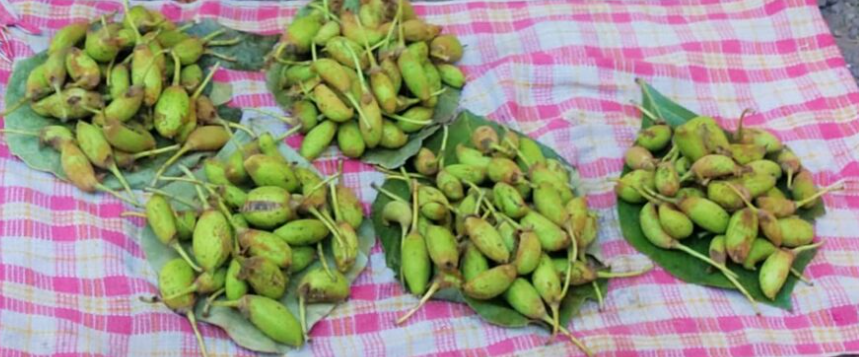
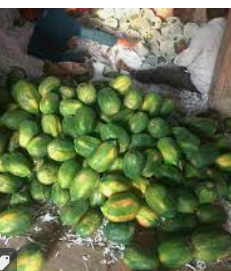
Apart from these crops and pulses, some other fruits and vegetables have also entered the market. Out of these, papaya and moha are the most important.
How Spicy Is The Food?
Yavatmal’s food culture is a balance between sweet and spicy where certain dishes are very spicy and hot, while others are sweet. For instance, saoji masala is used in a variety of dishes, making them extra spicy while drinks such as Maltowa is sweet which balances the spiciness.

Local Culinary Traditions
The local culinary dishes of the district includes saoji cuisine, Varhadi Biryani, a variety of Chivda, Besan Vadi, Lapad Roti, Ambadi and Rajgira Bhaaji, Jowar Bhakri, Akkha Tur, Maande, Sambhar Vadi and Mirchi Bhaaji. While some of these dishes are found in other neighboring districts, some of them are either exclusive to Yavatmal or are prepared differently in the district.
Besan Wadi
These are disc shaped deep fried pastry stuffed with a sweet, savory and spicy mixture made of gram flour, peanuts, spices, etc. In Yavatmal, it is served with Rassa (curry) which is spicy and Chaas (made from milk) on the side to balance the spice.
Maltowa

Maltowa, a hot beverage made of malt extract and cocoa powder based maltova powder, milk and sugar is extremely famous across the district and is not commonly found elsewhere. To prepare Maltowa, one simply warms milk, mixes it with Maltova powder and sugar until frothy, and serves it hot, often with optional spices like cinnamon or vanilla for added flavor.
Budicha Chivda
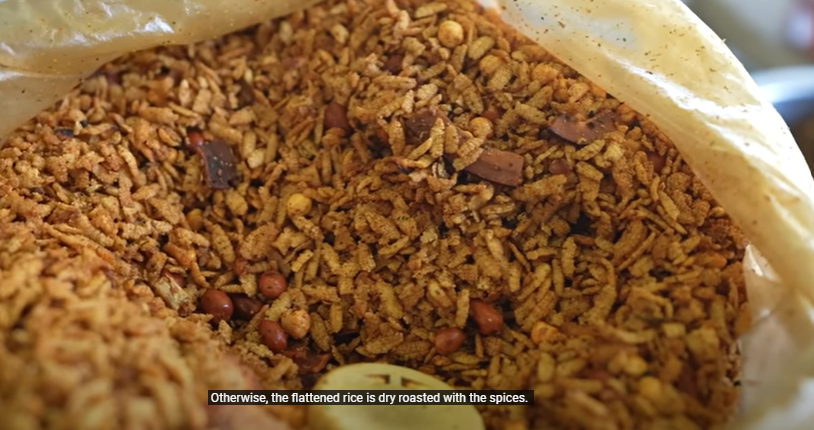
To prepare Budicha Chivda, the flattened rice is lightly roasted until crisp, while peanuts and moth beans are fried until golden brown. Sautéed onions are then added along with spices like turmeric and red chili powder to enhance the flavor. The roasted poha is combined with the fried nuts, beans, and the sautéed mixture, resulting in a delicious snack that can be customized with optional add-ins like cashews or coconut.
Shrikhand Vadi
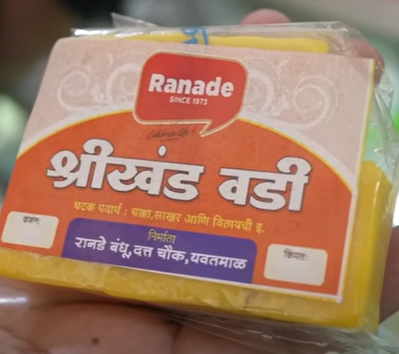
Shrikhand Vadi is a delicious Indian sweet dish made primarily from hung curd (yogurt), sugar, and cardamom, known for its unique taste and smooth texture. This Maharashtrian delicacy is often enjoyed as a dessert or snack and is particularly popular during festive occasions in Yavatmal. The preparation involves mixing hung curd with sugar and cooking it over low heat until the mixture thickens and the water evaporates, which typically takes about 15-20 minutes. Flavorings such as saffron and cardamom can be added to enhance its aroma and taste. Once cooked, the mixture is spread onto a greased plate and allowed to cool before being cut into square or diamond-shaped pieces
Ambadi Bhaaji
Ambadi Bhaaji is made of Ambadi Tur Dal, which is split pigeon pea lentil. The lentil is cooked with roselle leaves and is then cooked with by Banjara Solai, a no oil dish made of goat’s offal, blood and sorghum flour. It is a delicacy in Yavatmal.
Lapad Roti
Lapad Roti are thin and soft griddle baked flatbreads and have a skilled making process. The dough of the roti is stretched out by being trashed between the two palms. The rotis are then stacked one above another and then baked nicely, one by one.
Traveled Culinary Tradition
Waranga Khichdi
Waranga Khichdi comes from the neighboring district of Nanded. It is made from Kollam rice and bean dal and has been more popular as a street food in the Vidarbha region as people prefer this recipe.
Pickle
There are various kinds of pickles kept at home. Usually served as a side dish, it adds tangy and spicy flavor in the food. Some of the famous pickles of Yavatmal include cucumber pickle, raw mango pickle, Kavath (wood apple) pickle, Karvand (karonda cherry) pickle and waghyate lonche pickle.

Festival and Seasonal Delicacies
Festivals play a significant role in every Indian culture, with each festival celebrated uniquely and featuring distinct delicacies. The Telugu-speaking women in Ghatanji taluka of the district celebrate the Batukkama festival with items such as sesame seeds, biyyam pindi (rice flour), sapidi pappu (boiled dal), bellam (jaggery), and atukulu (poha). The Banjara community celebrates the Banjara Teej Utsav with delicacies including daliya (mixed cereal), bati (roti), saloi (made from goat or sheep intestines), and ghuggari (boiled red grams). Patali bati, made from ragi or bajra, is typically served with chicken curry or green leafy vegetables
Prasad and Bhandara
A popular prasad item in the district is Ambadi Tur Dal served with Kadai. Kadai, made of wheat and jaggery, is a delicacy in Yavatmal forms the part of the prasad that is offered to the local Devis and Devtas. Other prasad items include, Dry fruit Laddu, Shengdana Gajak, Til Gajak, Pedha, etc.

An interesting culture in the district, includes vegetable vendors offering sixteen vegetables free of cost to the bhakts during the Gauri Ganpati Utsav. At the Tuljai Mandir in the district, Banjara Solai is given as Prasad.
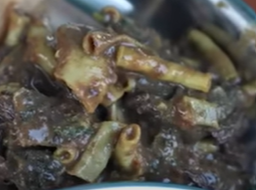
Eating Out
The eating-out culture in the district is quite rich, with numerous hotels and small restaurants scattered throughout. The Mahalaxmi Nashta Center is famous for its Waranga Khichadi, which caters to local tastes. Another popular choice is the Sambhar Wadi from NagpurWala Hotel. For those with a sweet tooth, Satkar Sweet Mart is a must-visit spot. Kamraj Eggs Tadka offers a unique combination of egg dishes, including half-fried and boiled egg fry, which have gained distinct popularity and are loved by many. These establishments, along with numerous others, contribute to the vibrant food scene in Mahalaxmi, offering a variety of flavors and cuisines to satisfy diverse palates.
Kaaram AgroTourism
Kaaram Agro Tourism in Yavatmal offers a unique opportunity to experience rural life in Yavatmal. Visitors can experience the joy of farm living, from tending to crops and livestock to savoring fresh, home-cooked meals. The serene environment, coupled with opportunities to learn about traditional agricultural practices, makes it a must visit place.
Budicha Chivda
In 1936, an elderly woman named Smt. Anjali Ramchandra Bujade opened a shop after migrating from Babhulgao. She began selling a mixture of namkeen, poha, murmure (puffed rice), masala, groundnuts, mot (dal), onion, and lemon. It is said that the name of the shop was given by the locals themselves. Today, the shop is run by the fourth generation of her family. The price of one plate of chivda has increased from 20 paise to 20 rupees today. The establishment now holds a trademark, and a franchise will soon be launched by the founder's great-grandson.
Satkar Sweetmart
Located in Yavatmal city, this place is renowned for its delicious sweets and snacks, including Kaju Katli, Badam Bake Cake, Kaju Cake, and Namkeen Balushahi. These treats are popular among locals and visitors alike, making the area a must-visit for anyone with a sweet tooth or a craving for traditional Indian snacks.
Local Self-Help Groups
GramHeet

GramHeet is addressing multiple factors that make smallholder farming financially viable in India, as well as those that force many farmers to abandon agriculture. Currently, the organization serves over 1,000 farmers who have experienced a 30% increase in their income. GramHeet aims to expand its work to 35 villages across two districts, ultimately reaching the 118 million smallholder farmers in India who own less than five acres of land. The organization was awarded the 2021 Cisco Global Problem Solver Challenge People’s Choice Award, receiving the most votes in a public online competition among 43 finalists. This recognition is particularly significant in Yavatmal, known as the suicide capital of the state, highlighting the critical need for sustainable agricultural solutions in the region.
Dragon Fruit Farming

Amoj Chavan, a young farmer from the small indigenous community of Fase Pardhe, has embarked on an inspirational journey into dragon fruit farming. Utilizing 1.5 acres of land, he sourced saplings from Karnataka and invested five lakh rupees into his venture. In just two years, his efforts have paid off significantly, demonstrating the potential for increased income through cash crops like dragon fruit. This success not only benefits him but also serves as a model for other farmers who may adopt his techniques. As dragon fruit farming continues to gain traction, it has the potential to uplift many farmers in the region, especially if supported by government initiatives. Currently, Chavan's achievements are at an individual level, but the broader implications of his work could lead to a transformative impact on local agriculture and livelihoods.
Last updated on 22 July 2025. Help us improve the information on this page by clicking on suggest edits or writing to us.